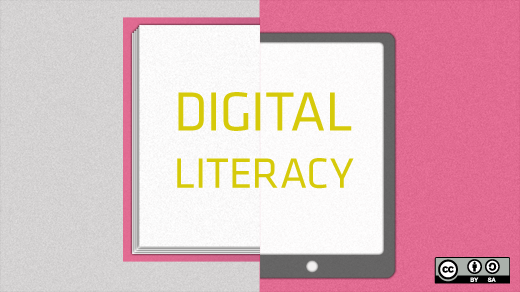Educators in the US and worldwide are increasingly preoccupied with: 1) how children learn, 2) how best to prepare children for the future, and 3) what role digital technology plays in the classroom—all of which is controversial and widely debated. Various theories and models of education and intelligence have played a large role in shaping this discussion. Noted developmental psychologist, Howard Gardner of Harvard's Graduate School of Education, has been instrumental for many years.
Before the Internet, Howard Gardner revolutionized the way teachers across the US and world viewed education and how children learn. He broadened the concept of intelligence by posing the theory of multiple intelligences (MI). Basically, he believed that people have multiple ways of thinking and learning and that such thinking and learning are culturally based and can not necessarily be measured by a single intelligence test. Gardner argued that there are eight autonomous intelligences rather than one overarching single intelligence factor, which could be measured by standard psychometric instruments, such as an IQ test.
In his classic work, Frames of Mind: The Theory of Multiple Intelligences (1983), Gardner argued that public schools tend to overemphasis linguisitic (writing and reading) and mathematical intelligences to the exclusion of spatial, kinesthetic, musical, interpersonal, intrapersonal, and naturalistic intelligences. After all, private schools like the Juilliard School or public schools like LaGuardia High School—both of which are located in NYC—are rare exceptions in education rather than the norm, which supports Gardner's point that most public schools do not center on musical or artistic intelligences like them. And, of course, neither Juilliard, LaGuardia High School, or similar schools are geographically commonplace throughout the US, or around the world for that matter, though many parents and teachers wish they were.
Gardner's theory has transformed education. Teachers and schools became devoted to his theories and implementing them. Many are still in place across the US and globe today. And many educators continue to think Gardner's theory is sacrosanct.
Since Gardner's classic work, however, alternative models on intelligence have emerged and more research has been conducted on neuroscience and how children learn best. Scott Barry Kaufman, for instance, has suggested that intelligence should be based on personal engagement and abilities in pursuit of personal goals rather than perhaps being pegged to others or even a single person's definition of intelligence. When children are actively engaged and more motivated in learning, they are more invested in their education and learning then increases. Moreover the latest research on brain plasticity shows that it is never too late to overcome skill deficits if there is a reason to do so and the motivation is there.
The models and research on how children learn best hinges on how public schools across the US and world try to prepare students for learning in a digital age. For centuries, the industrial, mass production approach to learning has been the norm. Students enter a classroom and then sit down, listen, take out their printed textbooks, pay attention to the teacher, and open their textbooks when they are told to do so.
The industrial, mass production model of learning is under fire and being questioned with the influx of digital technology today and globalization. Experts agree that we learn from our senses, primarily through our visual system which accounts for about 80% of what we process. They agree that a digital world requires different skills and they usually agree that it includes visual skills.
Experts tend to agree that the industrial model approach to learning may not be beneficial or an overly effective way to prepare children for a digital future and have proposed some alternatives. Some experts have suggested that we need to have a much more personalized, individualized approach to learning or personalized learning environments (PLEs), which could be accomplished with open source.
Play-based and game-based learning have also become increasingly popular in education circles as a result. Children learn through play. Through play, children can become absorbed in learning when they enter a flow state and are completely present and immersed in a task. Perhaps this is most notable with children playing digital games today and why so many educators are latching on to them.
Educators are often looking for new ways to improve learning outcomes, such as reading or test scores, for children. And this is especially the case with children who perform poorly, underachieve, or seem unmotivated to learn. One idea is to bring the arts and creativity into schools. Sir Ted Robinson, for instance, has been advocating for learning, especially math, to become more relevant and engaging with digital technology. Another idea is to have an educational curriculum that is open and available to students.
Many schools, however, have already jumped on the digital technology bandwagon and introduced tablets or laptops into the public schools to improve learning outcomes. Some schools have distributed iPads to every student for classroom instruction as a supplement to printed textbooks. Other schools have gone further by scraping printed textbooks for tablets or laptops entirely. And then, there are school districts like Los Angeles who are facing an uncertain future on how to proceed with digital technology in the classroom after students hacked through security measures to block free browsing on the Internet within hours of the use of iPads being distributed to them.
Though there are many who disagree with digital technology in the classroom, overall there are many reasons why digital technology should be used in the classroom and how it can help prepare children for the future. Teachers know innovative ideas and methods can help children learn better, particularly when student outcomes are not contingent or hinged solely on test scores. Many teachers know that it is important to be able to give students and parents more choice in learning models and with digital technology, given that one size does not fit all and that a more personalized learning experience is needed.
One way educators can help is by creating personalized learning environments (PLEs) by finding and using open source materials that fits their needs. With so many open educational resources available today, it's possible to see how open source can help transform and revolutionize education. The open opportunities are limitless.







7 Comments